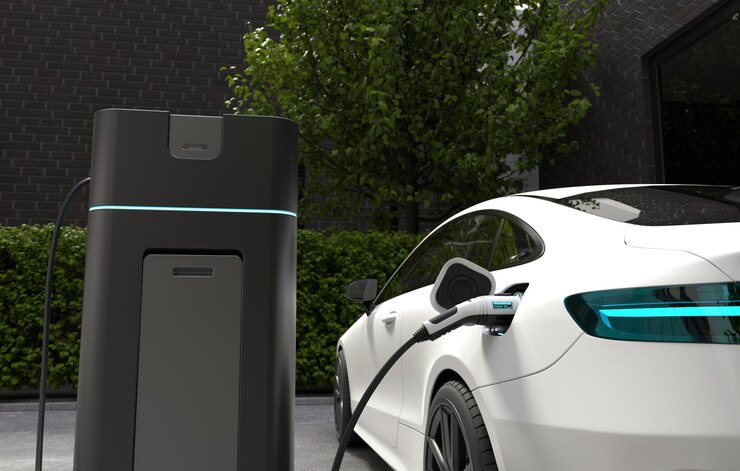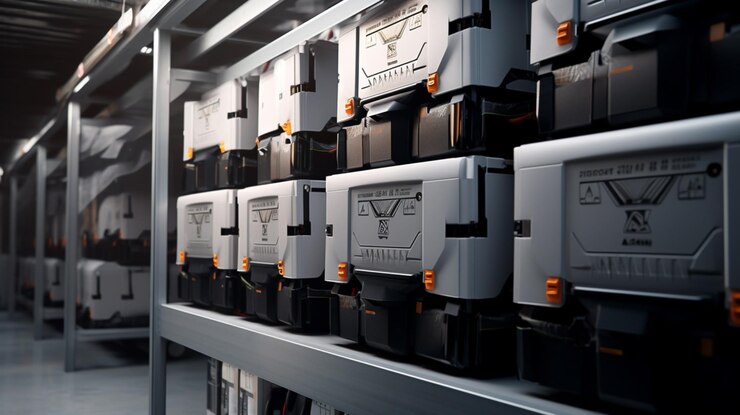Our Products
Industrial UPS

A UPS (Uninterruptible Power Supply) is a device that provides backup power when the main
electrical supply fails or drops to an unacceptable voltage level. It consists of batteries,
an inverter, and a transfer switch to automatically switch to battery power when needed.The
main functions of a UPS are:
1. Providing short-term power when the input power source
fails, allowing time to properly shut down equipment or switch to a generator.
2. Correcting common power problems such as voltage spikes,
sags, noise, frequency instability, and harmonic distortion.
3. Providing surge protection to shield connected equipment
from voltage spikes.
UPS systems come in three main types:
1. Online UPS - Provides continuous double-conversion of AC to DC to AC, completely isolating the output from input power problems.2. Line-interactive UPS - Maintains the inverter in line and redirects the battery's DC current path when power is lost.
3. Standby UPS - Switches to battery power within milliseconds when a power failure is detected.
UPSes are commonly used to protect sensitive electronic equipment like computers, data centers, telecommunication systems, and other mission-critical devices where unexpected power disruptions could cause data loss or business interruption.They are available in a wide range of sizes from protecting a single computer to powering entire buildings.
Key Differences between AC UPS and DC UPS
The main differences between AC UPS and DC UPS systems are:
Type of Power Input
• AC UPS: Accepts AC power as input, which is then rectified to DC for charging batteries
• DC UPS: Operates directly with DC power as input, which is used to charge the batteries
Conversion Process
• AC UPS: Requires two conversions - AC to DC during normal operation and DC to AC during
backup to supply the load
• DC UPS: Operates without the need for AC to DC conversion, storing and supplying DC power
directly to the load during backup
Applications
• AC UPS: Suitable for applications with predominantly AC-powered devices, providing
seamless transition during outages
• DC UPS: Suited for applications with DC-powered equipment or where a simpler power system
is desired, such as telecom systems and industrial controls
Complexity and Cost
• AC UPS: More complex due to inverter and rectifier requirements, leading to higher
costs
• DC UPS: Simpler design operating directly with DC, potentially lower costs
Efficiency Comparison
• Under the same conditions, DC UPS systems generally have higher efficiency compared to AC
UPS
• A DC UPS with lower battery capacity was able to power a 5W load for longer than an AC UPS
in one test
Selecting the Right UPS
The choice between AC UPS and DC UPS depends on the specific application:
• Check the power consumption (W) of the equipment to be backed up
• Select a UPS with output capacity greater than the connected load
• Consider factors like available space, presence of AC vs DC loads, and cost to determine the optimal UPS type
In summary, AC UPS and DC UPS differ in their power handling, conversion requirements, applications, and efficiency. The appropriate choice depends on the specific power requirements and characteristics of the equipment being protected.

Electric Vehicle Charger
Electric vehicle (EV) chargers are essential components of the growing electric mobility infrastructure, enabling the charging of electric vehicles. They are classified into three main types based on their charging speed and technology: Level 1, Level 2, and Level 3 (DC fast chargers).
Types of EV Chargers
Level 1 Chargers
- Power Output: Typically 120 volts, delivering about 3.5 to 6.5 miles of range per hour.
- Usage: Best suited for home use, where vehicles can be charged overnight. They are the slowest option and are often used as a backup charging solution.
- Installation Cost: Generally low, as they can be plugged into standard household outlets.
Level 2 Chargers
- Power Output: Ranges from 208 to 240 volts, providing 10 to 20 miles of range per hour.
- Usage: Commonly found in public charging stations and residential settings where faster charging is desired. They require a dedicated circuit and professional installation.
- Installation Cost: Higher than Level 1, typically between $500 and $8,000 for the charger, plus installation costs of $600 to $13,000.


Level 3 Chargers (DC Fast Chargers)
- Power Output: Operates at 200 to 500 volts, offering rapid charging capabilities, typically adding 60 to 80 miles of range in about 20 minutes.
- Usage: Ideal for long-distance travel and urban environments where quick charging is necessary. They are often located at highways, shopping centers, and other high-traffic areas.
- Installation Cost: Significantly higher, with unit costs ranging from $15,000 to $40,000, plus installation costs that can reach up to $50,000.
Charging Technology
AC vs. DC Charging: Level 1 and Level 2 chargers use alternating current (AC), which is converted to direct current (DC) by the vehicle's onboard charger. In contrast, Level 3 chargers provide DC directly, allowing for much faster charging times.
Connector Standards
- Level 1 and 2: Generally use the SAE J1772 standard.
- Level 3: Can have multiple connector types, including CHAdeMO, CCS (Combined Charging System), and Tesla connectors, with CCS becoming the industry standard.
As the demand for electric vehicles continues to rise, understanding these charger types helps consumers and businesses make informed decisions about their charging infrastructure needs.
Railway Battery Charger

Railway battery chargers are essential components that ensure the proper operation of battery-powered systems in trains. These chargers convert utility AC power into regulated DC voltage and current to keep batteries charged and ready for use.
Key Features of Railway Battery Chargers
- Fully controlled IGBT based inverter for efficient power conversion
- Temperature compensated battery charging to optimize charging based on battery temperature
- High efficiency, typically greater than 90%
- LED indications for fault monitoring
- IP52 degree of protection as per IEC 529 standard
- Wide operating temperature range of 0-55°C
- Natural cooling for low maintenance
- Fast response and high reliability
- Maintenance-friendly design
- Excellent operator interface
Advantages of IGBT-Based Inverters
- High Efficiency: IGBT-based inverters typically achieve efficiencies greater than 90%, which minimizes energy losses during the AC to DC conversion process. This efficiency is crucial in railway applications where energy conservation is a priority.
These advantages make IGBT-based inverters a preferred choice for modern railway battery chargers, enhancing both operational efficiency and reliability.

Solar Inverter

A solar inverter, also known as a photovoltaic (PV) inverter, is an essential component in solar energy systems. It converts the variable direct current (DC) output from solar panels into alternating current (AC), which can be used by household appliances or fed into the electrical grid. This conversion is crucial for making solar energy usable in everyday life.
Types of Solar Inverters
- Stand-alone Inverters: These are used in off-grid systems where the inverter draws DC energy from batteries charged by solar panels. They typically do not connect to the utility grid and may not require anti-islanding protection.
- Grid-tie Inverters: Designed to synchronize with the utility grid, these inverters shut down automatically if the grid goes down, ensuring safety. They do not provide backup power during outages.
- Battery Backup Inverters: These inverters can draw energy from batteries, manage battery charging, and supply AC power during utility outages. They include anti-islanding protection.
- Hybrid Inverters: These versatile inverters manage energy from solar panels, batteries, and the grid, allowing for both self-consumption and backup capabilities.
- Micro-inverters: Each micro-inverter operates with a single solar panel, optimizing its output independently. This setup enhances performance, especially in partially shaded conditions, and simplifies installation.

Key Functions
- Maximum Power Point Tracking (MPPT): This technology optimizes the power output from solar panels by adjusting the electrical load to ensure maximum efficiency.
- Anti-islanding Protection: This safety feature ensures that the inverter shuts down during a grid outage, preventing the inverter from feeding power back into the grid, which could endanger utility workers.
- Monitoring and Control: Many modern inverters have monitoring capabilities, allowing users to track energy production and system performance through apps or web interfaces.
In summary, solar inverters are vital for converting solar energy into a usable form, with various types designed to meet different needs, from grid-tied systems to off-grid solutions. Their advanced features enhance efficiency, safety, and user control over solar energy systems.
